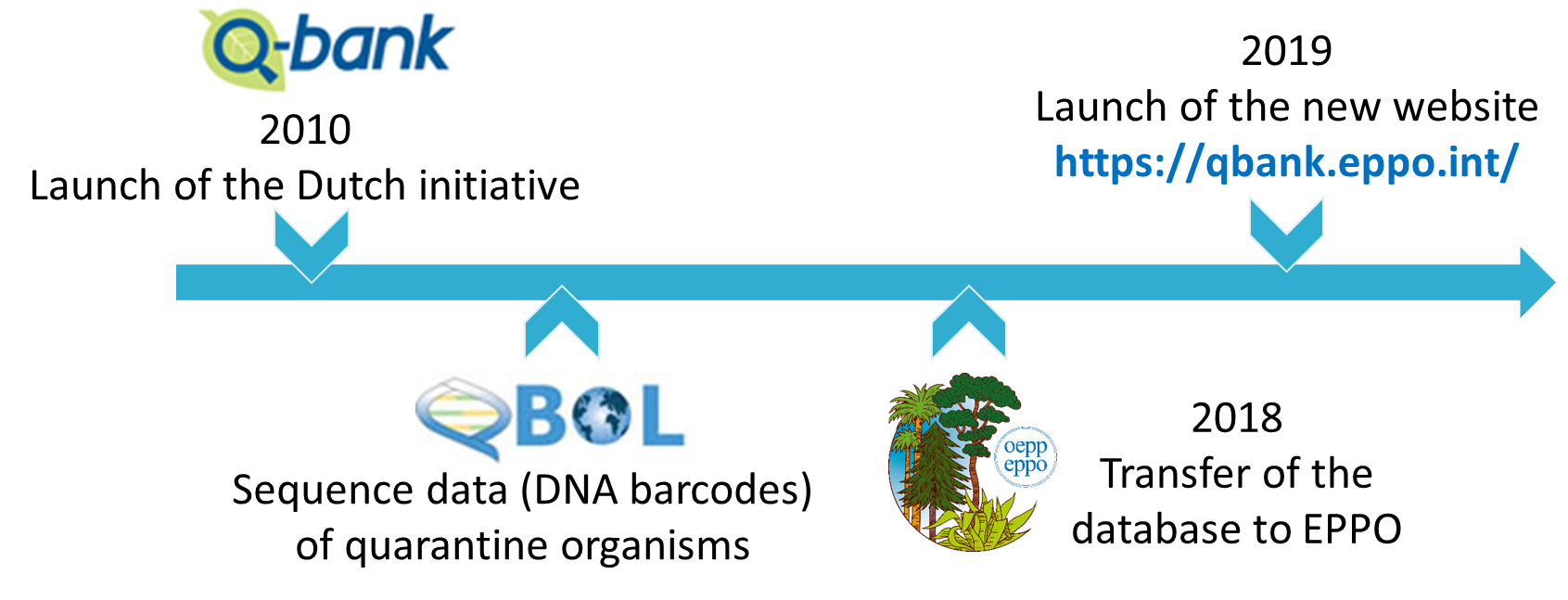Welcome to EPPO-Q-bank!
A database to support plant pest diagnostic activities
Our objective
The aim of the EPPO-Q-bank is to support diagnostic activities of phytosanitary organizations: national plant protection organizations, general inspection bodies, and private laboratories. The analysis of DNA sequences (e.g. barcodes) is increasingly used for diagnostics in phytosanitary laboratories. Barcoding uses short DNA sequences specific to a well-defined taxon for species identification. A database with reliable sequences generated from vouchered biological material is an indispensable tool to detect and identify harmful quarantine organisms.
EPPO-Q-bank comprises data of properly documented species and strains present in collections. Depending on the collection, these may be obtained for further studies or used as controls in identification and detection tests.
The entries in EPPO-Q-bank are updated by a team of curators with taxonomic, phytosanitary and diagnostic expertise from national plant protection organizations world-wide and institutes with connections to relevant phytosanitary collections. The curators are functioning under the supervision of the EPPO Panel on Diagnostics and Quality Assurance and specialized diagnostic EPPO Panels.
Content of EPPO-Q-bank
EPPO-Q-bank is an open-access database comprising
• Sequence data of properly documented specimens, isolates, strains or populations of quarantine species or their look-alikes.
Note: you need to login to see sequences.
• For most of the specimens, isolates, strains or populations, links to collections from which items may be obtained for further studies, or for use as controls in identification and detection tests.
• Barcoding protocols published in EPPO Diagnostic Protocols or being identified as useful protocols by our curators.
• Tools to perform quick analyses of barcoding sequences, including single or multilocus blast and tree views.
• Links to other relevant databases, e.g. EPPO Global database.
Information is provided per discipline (arthropods, bacteria, fungi, nematodes, phyto-plasmas, viruses & viroids, and invasive plants).
History of the Database:

Q-bank a Dutch initiative
The EPPO-Q-bank Database is a database on quarantine pests. This database originally started as part of a Dutch project to strengthen the plant health infrastructure (Q-bank). Q-bank was launched in 2010 and further developed in the framework of the EU funded project QBOL. The Dutch Ministry of Economic Affairs financed this project from 2011 to 2018.
From Q-bank to EPPO-Q-bank
The possible maintenance of Q-bank within EPPO was discussed for several years and in September 2018, the EPPO Council agreed that the database should be transferred to EPPO. Data from the original Q-bank database has now been transferred to the new EPPO Q-bank database, and during the course of 2019 and 2020, further work was conducted to harmonize the content and structure of the data among disciplines.
We count on you to help us enrich the database
You can contribute by:
• by submitting sequences to EPPO-Q-bank curators,
• by providing feedbacks on the use of the database,
• or by becoming a curator.
More information here.
How to cite EPPO-Q-bank?
EPPO (2024) EPPO-Q-bank. https://qbank.eppo.int [accessed date]
